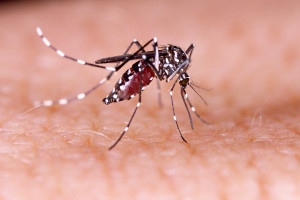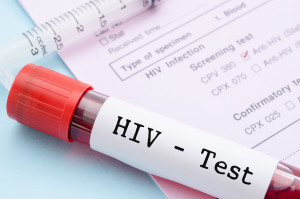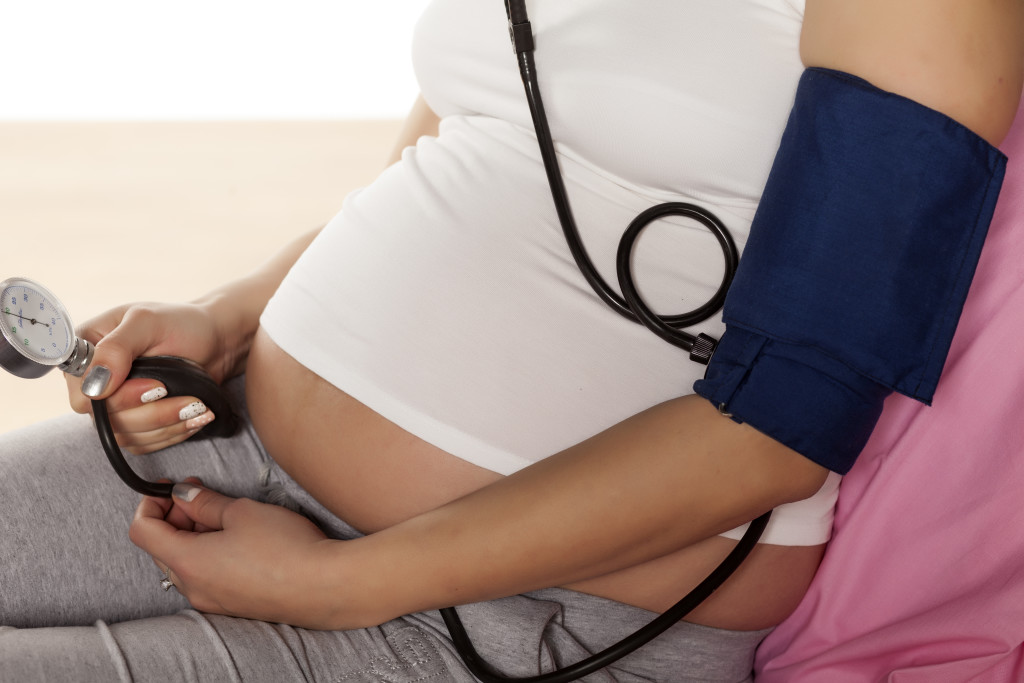 According to Cancer.org, approximately 1 in 8 women in the United States will develop invasive breast cancer during their lifetimes. This Mother’s Day, and every day, we remember that each year we lose mothers, daughters, sisters and friends to breast cancer while scientists rush to find a cure. As we hope and wait for a day when the world will be cancer free, there is something that women can do to help them to understand their potential risks and take proactive steps toward a potential early diagnosis and treatment plan. The breast cancer (BRCA) gene test is helping women to understand if they may be more susceptible to developing cancer, based on their genetic history, so that they can the necessary steps to fight back against breast cancer.
According to Cancer.org, approximately 1 in 8 women in the United States will develop invasive breast cancer during their lifetimes. This Mother’s Day, and every day, we remember that each year we lose mothers, daughters, sisters and friends to breast cancer while scientists rush to find a cure. As we hope and wait for a day when the world will be cancer free, there is something that women can do to help them to understand their potential risks and take proactive steps toward a potential early diagnosis and treatment plan. The breast cancer (BRCA) gene test is helping women to understand if they may be more susceptible to developing cancer, based on their genetic history, so that they can the necessary steps to fight back against breast cancer.
What is the BRCA Gene Test?
The BRCA gene test is a blood test that looks to identify mutations in those genes called BRCA1 and BRCA2 that help to maintain normal cell growth. Changes in these genes can help determine a woman’s likelihood for developing breast cancer as well as ovarian cancer during her lifetime. Women with mutated BRCA1 or BRCA2 genes are at a higher risk of developing the disease. It is important to understand that the BRCA gene test is not a way to identify if a woman has already developed cancer. It only tests for the presence of the mutated BRCA genes.
What Causes the Gene Mutation?
A mutation in the BRCA1 and/or BRCA2 genes can be inherited from either the mother’s or the father’s side of the family. It is estimated that approximately 2 or 3 out of 1000 adult women have a BRCA gene change.
Who Should be Tested?
Only women with a strong family history of breast or ovarian cancer, and women with a previous diagnosis, are encouraged to take the BRCA gene test. Before and after testing women are also encouraged to complete genetic counseling, a process that aims to help women to understand the benefits, risks, and possible outcomes of the test.
Other Factors to Consider
Women who meet any of the following criteria should ask their gynecologist or primary care physician if they are a candidate for the BCRA gene test:
- Have multiple cases of breast cancer in the family
- Have at least one family member who has had BRCA-related cancer
- Are an Ashkenazi Jew (a Jewish person whose ancestors came from Eastern Europe)
- Have one or more male family members who have had breast cancer
- Have been diagnosed with breast cancer before age 50
- Have had breast cancer in both breasts
- Have had breast cancer and ovarian cancer
What are the Potential Test Results?
The BRCA gene test may indicate that cells are normal, abnormal, or that the test results are uncertain. If the results are normal, or negative, it means the test identified no change in the BRCA1 or BRCA2 genes. If your results are abnormal, or positive, it means the test identified either BCRA1 or BRCA2 gene changes. Women with positive BRCA results have about a 35 to 84 percent chance of developing breast cancer and about a 20 to 40 percent chance of developing ovarian cancer. If the test results are uncertain, it may mean that a gene change is present but it cannot be determined how significant the change is, or if the change is indicative of an increased risk for developing cancer.
It is important to understand that only about 5 to 10 percent of breast and ovarian cancers are linked to the BRCA1 or BRCA2 gene change. A negative BRCA test may not guarantee a cancer-free lifetime, but for those at higher risk, genetic knowledge can be the first step in becoming extra vigilant, educated, and prepared with a plan for regular cancer screenings.
Until the Mother’s Day when we can celebrate a cancer-free world, consider your family history and speak with your doctor about whether or not the BCRA gene test is right for you.
More
 Diabetes is a dangerous health condition in which blood glucose levels rise higher than normal, a state known as hyperglycemia. For those suffering from type II diabetes, since their bodies do not properly use insulin, excess levels of the hormone are produced by the pancreas. Over time, the pancreas cannot create enough insulin to manage glucose levels, resulting in dangerous side effects.
Diabetes is a dangerous health condition in which blood glucose levels rise higher than normal, a state known as hyperglycemia. For those suffering from type II diabetes, since their bodies do not properly use insulin, excess levels of the hormone are produced by the pancreas. Over time, the pancreas cannot create enough insulin to manage glucose levels, resulting in dangerous side effects.
Type II diabetes is the most common form of the disease, representing about 90 to 95 percent of all diagnosed cases. It is estimated that 29.1 million people in the United States suffer from diabetes, 8.1 million of who may be undiagnosed and unaware of their condition. As if these statistics aren’t great enough cause for concern, experts predict that the number of cases of type II diabetes is on the rise. The good news is that many of the risk factors for type II diabetes are preventable. By making conscious choices to lead a healthy lifestyle, you can help to reduce or even eliminate the likelihood for being diagnosed with the type II diabetes. If you fear that you or someone you love may be at risk for the disease, read these healthy tips that will help you lower your odds of being diagnosed with this painful, and potentially deadly condition.
Manage Your Weight.
An overweight or obese body mass index (BMI) is one of the greatest risk factors for developing type II diabetes. In a recent study, individuals who lose only seven percent of their initial body weight and exercising regularly reduced their risk of developing diabetes by almost 60 percent.
Get Active.
The first step toward diabetes prevention is getting out and getting active. Regular physical activity can help you to lower your weight and blood sugar levels, and increase your sensitivity to insulin, all things that will help you to lower your risk of developing type II diabetes.
Quit Smoking.
As if you didn’t need another reason, if you are a smoker, it’s time to kick the smoking habit. Tobacco use can increase blood sugar levels that lead to insulin resistance. Studies show that individuals who smoke more than 20 cigarettes a day almost double their risk of developing diabetes compared to nonsmokers.
Eat Foods High in Fiber.
This simple ingredient can make a significant difference in lowering your risk of developing diabetes. Fiber helps to improve blood sugar control, lower the risk of heart disease, and promote weight loss. In addition, when you eat fiber, you are likely to feel fuller, for longer, reducing your desire to snack on sugary, calorically-dense foods. Fruits, vegetables, beans, whole grains, seeds, and nuts are all foods high in fiber. Incorporate more of these healthy foods into your diet to help manage your diabetes risk factors.
Choose Whole Grains.
There are many benefits of incorporating whole grains into your diet, including reducing your risk for type II diabetes. The mighty whole grain can help you to maintain proper blood sugar levels. When browsing the aisles of the grocery store, choose whole grain product options whenever possible, especially when choosing pastas, breads, and cereals.
Eat Smaller Meals.
When you eat only one or two large meals per day that are high in calories, fat, sugar, and/or sodium, your glucose levels spike. Eating more small, well-balanced meals throughout the day can lower your chances of experiencing unsafe spikes in blood glucose levels, and can ultimately lower your risk of diabetes.
Reducing your risk of diabetes is as simple as maintaining a healthy diet and being active every day. If you have questions or need help adopting healthy lifestyle habits, contact your doctor today. And if you are in Western New York and looking for a new Ob-gyn, please consider our practice.
More
The feeling of having to go all the time can be frustrating and disruptive. There is no need to feel embarrassed or to feel like you need to hide your suffering. Feelings of frequent urination, or experiencing the sudden urge to urinate that you can’t control, also known as overactive bladder (OAB), is more common than you may realize. The Urology Care Foundation estimates that approximately 33 million Americans have overactive bladder, and that at least 40 percent of all women in the United States live with OAB symptoms. If you are suffering from OAB, know that you are not alone, and that there are solutions to help you manage your symptoms and start taking back control of your schedule.
The Causes of Frequent Urination
There are a variety of factors that could be causing your frequent urination in women, including:
- Type I or type II diabetes.
- Pregnancy.
- Stroke or other neurological diseases.
- A urinary tract infection (UTI).
- Bladder cancer.
- Bladder dysfunction.
- Radiation therapy.
- Interstitial cystitis, a condition characterized by pain in the bladder and pelvic region and frequent urination.
- The use of diuretics, which are medications used to treat high blood pressure or fluid buildup that often result in frequent urination.
The Causes of OAB
OAB occurs when the muscles of the bladder contract involuntarily even when the volume of urine in your bladder is low, creating an urgent need to urinate. Conditions that cause OAB include:
- Diuretic use.
- An acute UTI.
- Constipation.
- Excess consumption of caffeine or alcohol.
- Declining cognitive function due to aging.
- Incomplete bladder emptying.
- Difficulty walking which can lead to bladder urgency if you’re unable to get to the bathroom quickly.
- Bladder abnormalities including tumors or bladder stones.
- Neurological disorders including Parkinson’s disease, strokes, and multiple sclerosis.
- High urine production which may be the result of high fluid intake, poor kidney function or diabetes.
Treatment Options
Know that you do not need to suffer from frequent urination or OAB. Treating the underlying cause of your condition, such as diabetes or a UTI, will help to manage your symptoms. In addition, behavioral therapy treatment options for OAB include the following:
- Bladder retraining. Increasing the intervals between using the bathroom over a 12-week time period can help retrain your bladder to hold urine longer.
- Diet modification. Avoiding foods that may act as diuretics can reduce symptoms. Such foods include caffeine, alcohol, carbonated drinks, tomato-based products, chocolate, artificial sweeteners, and spicy foods. Eating high fiber foods can also alleviate symptoms of constipation, which can be a cause of OAB.
- Mange your fluids. Drink enough water to prevent constipation, but avoid drinking fluids right before bedtime.
- Kegel exercises. Strengthen the muscles around the bladder and urethra by exercising your pelvic muscles.
Whether you are suffering from frequent or accidental urination, talk to your doctor today. He or she can help you to determine the underlying cause of your symptoms and together you can develop a treatment plan that will help you to take back control and manage your trips to the bathroom.
More
 Much has been reported recently about the outbreak of the Zika virus. This disease is seeing a surge in diagnosed cases especially in Southern and Latin American countries. Zika virus poses great risks for pregnant women, due to potential health complications and side effects to unborn babies who contract the virus from their infected mothers. Such risks include the potential for birth defects, and in the most severe cases, even infant death. If you are pregnant or looking to become pregnant, you should be aware of the causes and risks associated with Zika virus so that you are prepared to keep yourself and your baby safe during and after your pregnancy.
Much has been reported recently about the outbreak of the Zika virus. This disease is seeing a surge in diagnosed cases especially in Southern and Latin American countries. Zika virus poses great risks for pregnant women, due to potential health complications and side effects to unborn babies who contract the virus from their infected mothers. Such risks include the potential for birth defects, and in the most severe cases, even infant death. If you are pregnant or looking to become pregnant, you should be aware of the causes and risks associated with Zika virus so that you are prepared to keep yourself and your baby safe during and after your pregnancy.
What is Zika virus?
The Zika virus is a usually mild disease that’s transmitted through the bite of an infected mosquito. Unfortunately, there is currently no vaccine for Zika virus, nor is there any current treatment.
What are the known side effects and symptoms?
Zika symptoms include fever, rash, headaches, red eyes, muscle and joint pain, and pain behind the eyes. Cases of death from Zika are extremely rare, but have been reported.
How does Zika virus spread?
The primary way that women can contract the Zika virus is by being bitten by an infected mosquito. Women can also contract the Zika virus from infected male sexual partners. A fetus whose mother has the Zika virus can become infected either during pregnancy or during delivery.
What health risks does the virus pose to babies?
It is believed that Zika virus can cause a condition known as microcephaly in infants who contract the disease in utero or during delivery. Microcephaly is a neurological condition in which a baby’s head develops much smaller than expected during pregnancy. Typically, a baby’s head grows as its brain grows, however in cases of microcephaly, the baby’s brain does not develop properly, or stops growing after birth, resulting in an undersized head. Other birth outcomes detected in fetuses infected with the Zika virus include: eye defects, hearing deficits, and impaired growth. In the most severe cases, microcephaly can be fatal.
What health risks does the virus pose to women who want to become pregnant in the future? According to the Centers for Disease Control and Prevention (CDC), it is believed that women who contract the Zika virus are not at risk for birth defects in future pregnancies after the virus has cleared from their blood. Evidence indicates that once a woman has been infected with the virus, she is likely to be protected from a future Zika infection.
What parts of the world face the greatest risk?
For women living in the continental United States, the odds of contracting the Zika virus are extremely low. While cases of Zika have been reported in the continental United States, they have only been cases of individuals who recently traveled to countries with Zika transmission. The CDC recommends that women who are pregnant, or looking to become pregnant, should not travel to the following countries, unless visiting an area with an elevation above 6,500 feet where mosquitos are less prevalent:
- American Samoa
- Aruba
- Barbados
- Bolivia
- Bonaire
- Brazil
- Cape Verde
- Colombia
- Commonwealth of Puerto Rico, U.S. territory
- Costa Rica
- Cuba
- Curacao
- Dominca
- Dominican Republic
- Ecuador
- El Salvador
- French Guiana
- Guadeloupe
- Guatemala
- Guyana
- Haiti
- Honduras
- Jamaica
- Marshall Islands
- Martinique
- Mexico
- New Caledonia
- Nicaragua
- Panama
- Paraguay
- Saint Martin
- Saint Vincent and the Grenadine
- Samoa
- Saint Maarten
- Suriname
- Tonga
- Trinidad and Tobago
- U.S. Virgin Islands
- Venezuela
If you are pregnant and have traveled to, or lived in, an affected country, see your OBGYN whether or not you’ve experienced any symptoms.
How can women protect themselves and their babies from Zika virus?
Women should minimize their risks of being exposed to Zika by avoiding countries with known outbreaks. Pregnant women and those trying to become pregnant who plan to travel to an impacted area should talk to their OBGYN prior to traveling. If you can not avoid traveling to a location were Zika has spread, wear long sleeves, pants, and socks, stay inside during peak mosquito hours, and apply forms of mosquito repellent safe to use during pregnancy. In addition, women can minimize their potential exposure to mosquitos by maintaining window screens and air conditioning in their homes, and eliminating places where mosquitos breed such as tires, buckets, and other areas where water pools.
What happens if you do contract Zika while pregnant?
Your doctor will consider administering an amniocentesis test to check your fetus for the virus, and you will likely receive ultrasounds every three to four weeks for the rest of your pregnancy to check for signs of microcephaly.
If you are pregnant of thinking of becoming pregnant, talk to your OBGYN today about the risks of Zika virus to make sure you and your baby are protected now and throughout your pregnancy.
More

As women, we have a number of bodily behaviors we must closely monitor, but it can be difficult to know what is considered “normal,” and what is considered “abnormal,” when you are a sample size of one. Women should always feel comfortable speaking with their gynecologists about any concerns that they may have. Asking, “Is that normal?” is a smart way to stay informed, and stay safe. If you have been asking yourself if your level of uterine bleeding is normal, consider the following factors, and as always, never be afraid to ask your doctor.
What is Normal Uterine Bleeding?
Normal uterine bleeding, also known as vaginal bleeding, or menorrhea, is characterized by the periodic blood flow from the uterus. Normal vaginal bleeding occurs as a result of cyclic hormonal changes.
What is Abnormal Vaginal Bleeding?
In general, abnormal bleeding is defined as a flow of blood from the vagina that occurs either at the wrong time during the menstrual cycle, or in inappropriate amounts. In women who are ovulating regularly, it typically involves excessive, frequent, irregular, or decreased bleeding. More specifically, the following are considered abnormal:
- Bleeding between periods.
- Bleeding after sex.
- Spotting anytime in the menstrual cycle.
- Bleeding after menopause.
- Bleeding for too long a period of time, known as hypermenorrhea, or menstrual cycles that are longer than 35 days.
- Bleeding for too short a period of time, known as hypomenorrhea, or menstrual cycles that last fewer than 21 days.
- A menstrual period that occurs too frequently, known as polymenorrhea.
- A menstrual cycle that does not occur frequently enough, known as oligomenorrhea.
- The lack of menstruation for three to six months, known as amenorrhea.
- If the volume of blood is too much, known as menorrhagia.
- If the volume amount of blood is too little, known as hypomenorrhea.
Diagnosing Abnormal Bleeding
To determine if what you are experiencing is normal or abnormal, your gynecologist will need to know the following:
- Your personal and family health history.
- The timing of your typical menstrual cycle.
- The typical pattern of your bleeding, including the days, lengths, flow type (light, medium, heavy, or spotting).
- If you are ovulating.
- If you are pregnant.
Causes of Abnormal Bleeding
If you are experiencing prolonged bleeding at irregular intervals after not having a menstrual period for several moths, it may be a sign that you are not ovulating regularly.
- Unless you are newly pregnant, the bleeding may be associated with complications such as miscarriage or ectopic pregnancy.
- Growths or problems in or around the uterus.
- Blood-clotting problems.
- Changes in hormone levels.
If you are monitoring your menstrual cycles and monthly blood flow and believe you may be experiencing abnormal levels of bleeding, talk to your doctor. He or she will help you determine what is normal for you, and help you address the underlying reasons for anything out of the ordinary.
And if you are looking for a new gynecologist and live in the Western New York area, please give our practice a call. We are accepting new patients.
More
 Gestational diabetes is a form of the metabolic disease that impacts pregnant women who do not have a previous history of diabetes, but who have high blood glucose levels during their pregnancy. The Centers for Disease Control and Prevention (CDC) estimate that in 2014 as many as 9.2 percent of pregnant women suffered from this condition. If you are pregnant or trying to become pregnant, understand the risks and treatment options available to help ensure a safe and healthy pregnancy.
Gestational diabetes is a form of the metabolic disease that impacts pregnant women who do not have a previous history of diabetes, but who have high blood glucose levels during their pregnancy. The Centers for Disease Control and Prevention (CDC) estimate that in 2014 as many as 9.2 percent of pregnant women suffered from this condition. If you are pregnant or trying to become pregnant, understand the risks and treatment options available to help ensure a safe and healthy pregnancy.
Causes
The causes of gestational diabetes are not completely known, however it is believed that hormones from the placenta that help the infant during development begin to block the action of the mother’s insulin into her own body. When proper insulin levels decline, glucose cannot leave the blood to be converted into energy, instead building up in the blood in unsafe levels, a condition known as hyperglycemia.
Risk Factors
All pregnant women are at risk of developing gestational diabetes, however some women are at a higher risk. Risk factors for gestational diabetes include:
- Age. Women age 25 or older during their pregnancy are more likely to develop gestational diabetes.
- Weight. Women with a body mass index (BMI) of 30 or higher are more likely to develop gestational diabetes.
- Family history. Women who have a close relation, such as a parent or sibling, that has previously been diagnosed with type 2 diabetes are at a greater risk for gestational diabetes.
- Personal health history. Those who have suffered from prediabetes are at a greater risk of gestational diabetes. Prediabetes is a condition defined by slightly elevated blood sugar that may be a precursor to type 2 diabetes. Women are also at a greater risk if they were diagnosed with the condition during a previous pregnancy, if they delivered a stillbirth, or if they delivered a baby who weighed more than nine pounds.
- Race. While experts are uncertain of the reason, women who are African American, Hispanic, American Indian, or Asian are more likely to develop gestational diabetes.
Potential Impact to Mother and Baby
Gestational diabetes impacts the mother in late pregnancy after the baby’s body has been formed. Untreated or poorly controlled gestational diabetes can have serious consequences on infants. Women with gestational diabetes experience an overuse of the pancreas as it works to produce insulin that is ultimately ineffective in lowering blood glucose levels. The high levels of blood glucose are eventually transferred to the baby through the placenta, causing the baby’s pancreas to overproduce insulin as well. Eventually, the extra, unneeded energy is stored by the baby as excess fat, a condition known as macrosomia.
Babies with macrosomia face several potential health risks, including damage to their shoulders during birth, low blood glucose levels at birth due to extra insulin levels, and breathing problems. Later in life, the babies are at a higher risk of suffering from obesity and type 2 diabetes.
Testing
Your OBGYN will likely evaluate your risk factors for gestational diabetes early in your pregnancy. Based on those factors, he or she will help determine a screening frequency to identify any risk factors early. For example, women at high risk may be tested at their very first prenatal visit, while women at average risk will likely be screened during the second trimester.
Women diagnosed with gestational diabetes will require frequent checkups, especially during the final trimester. During these exams, and possibly even in between visits through self-testing, their blood sugar will be monitored. Your OBGYN may also prescribe insulin to help control your blood sugar.
Directly after the birth, your OBGYN will likely check your blood sugar and will want to test it again in six to 12 weeks to determine if levels have returned to normal. Even with an eventual normal reading, women who have been diagnosed with gestational diabetes should receive a diabetes screening at least every three years.
Treatment
In addition to constant monitoring of blood sugar levels, there are treatment options available for women to manage gestational diabetes, including:
- Following a healthy diet high in fruits, vegetables, and whole grains.
- Receiving regular exercise, which helps lower blood sugar by stimulating the body to move glucose into cells and use it as energy.
- The use of insulin, which is prescribed for 10 – 20 percent of women suffering from gestational diabetes.
Every woman strives for a healthy pregnancy. Talk to the doctors at Chouchani, Sayegh and Bagnarello about the factors that may impact your risk for developing gestational diabetes. Our doctors will work with you to help identify any threats early to keep you and your new loved one safe and healthy.
More
What to Bring to the Hospital When You’re Ready to Deliver, and What to Leave at Home

You’ve been planning for months to welcome your new baby into your family, and the big day is steadily approaching. To make sure you are prepared with everything you need to bring with you to the hospital, spend some time at the start of your third trimester packing the bag you’ll be taking with you to the hospital. Remember that you’ll be coming back home with a big bundle of joy, so pack lightly, and only bring those things with you that you will truly need, and leave the rest at home. We’ve got your hospital checklist of what to bring, and what to leave behind.
Pack it for Mom
- Photo identification, such as your driver’s license.
- Health insurance information.
- Hospital forms.
- Birth plan (if you have one).
- Cell phone and charger (everyone will be looking for the first Facebook post of your new little one!).
- A few pairs of disposable, but comfortable, socks or slippers that you can wear walking the halls before and after labor.
- A warm, comfortable robe or cardigan that you don’t mind getting dirty. Bring one that opens in the front if you’re planning on breast feeding.
- Your own pillow, if you find it comforting, but bring a pillowcase you don’t mind disposing of after you leave.
- Maternity bras and nursing pads.
- Sanitary pads to wear post-delivery.
- Ear plugs, to help you sleep.
- Sugar-free lozenges to keep your mouth moist during labor.
- Glasses, contacts, and solution, if needed.
- Personal toiletries and bath products (pack travel sized items to make your bag lighter).
- Hairbrush and ponytail holders.
- Lip balm.
- Pen and paper.
- Change for the vending machine, and cafe, and cash for the parking lot.
- Non-perishable (healthy) snacks.
- A book, e-reader, laptop, magazines, or anything else you may want to use to stay busy while waiting for baby, or while recovering.
Pack it – For Baby
- A pacifier.
- A receiving blanket.
- A few clothing options for baby to wear on the way home to accommodate your baby’s size, and what the weather will be like on the day he/she goes home.
- A car seat, but make sure you have it installed, and checked, before you arrive at the hospital. You don’t want the stress of trying to install it when you are ready to go home, and you certainly don’t want to risk an unsafe travel experience for your newborn.
Forget It
- Any clothes you don’t want to get ruined.
- Valuable jewelry.
- Prescription medications, including vitamins, but let your doctor know in advance what you may need so that the hospital can provide it for you.
- Diapers. Keep the stacks you have at home (you’re going to need them!), because the hospital will provide diapers while you’re there.
- A breast pump. The hospital will provide that too if needed.
With an expertly packed hospital bag you will be prepared with all of the items you and your baby will need to make your time at the hospital comfortable, and comforting.
If you need more advice, feel free to ask your OB-GYN. He or she has the experience to help you feel at ease before, during and after your delivery.
More
 The terms HIV and AIDS are powerful. They can instill fear, conjuring images of a terminal disease that causes years of painful suffering, isolation, social stigmas, and the risk of infecting those you love. HIV and AIDS are serious diseases with deadly consequences, but when fear of a diagnosis leads to an avoidance of testing, you only put yourself, and your loved ones, at a greater risk. According to a recent survey published in AIDS and Behavior, the majority of people who do not seek out testing for HIV and AIDS are either afraid of the test or afraid of getting a positive diagnosis. If you are one of the millions of Americans avoiding the HIV test, put your fears aside and consider the dangers you put yourself in by living in denial.
The terms HIV and AIDS are powerful. They can instill fear, conjuring images of a terminal disease that causes years of painful suffering, isolation, social stigmas, and the risk of infecting those you love. HIV and AIDS are serious diseases with deadly consequences, but when fear of a diagnosis leads to an avoidance of testing, you only put yourself, and your loved ones, at a greater risk. According to a recent survey published in AIDS and Behavior, the majority of people who do not seek out testing for HIV and AIDS are either afraid of the test or afraid of getting a positive diagnosis. If you are one of the millions of Americans avoiding the HIV test, put your fears aside and consider the dangers you put yourself in by living in denial.
According to the U.S. Centers for Disease Control (CDC) approximately 13 percent of the more than 1.2 million Americans with HIV are unaware that they have the virus, which means they could be spreading it further without knowing they are putting others at risk. Noticing any unusual signs or symptoms that could be indicative of a sexual transmitted disease (STD) is scary, but just hoping that the symptoms will go away on their own will only leave you in greater danger. Diagnosing HIV early is crucial both to an effective treatment plan, and to stop its spread. Early detection also reduces rates of mortality and morbidity.
Know Your HIV Status
All women should know their HIV status for these four reasons:
- Many new HIV infections are caused by people unaware that they are infected.
- HIV medicines are more effective when treatment begins early.
- Starting treatment early can mean the best health for you, and for a longer time, before you develop AIDS or other infections. When HIV is not identified until it has progressed to advanced stages, treatment options are limited.
- If you are pregnant, there are precautions you can take to avoid passing HIV to your baby.
It can take between two weeks and three months after infection for HIV antibodies to be found in your blood. It may take up to three months for an HIV test to be positive if you have reason to believe that you may have recently been infected. Talk to your doctor about how frequently you should be tested, given your lifestyle and risk factors.
Get Tested
To help save your own life, and the lives of your loved ones, set your fears aside and get tested:
- At least once after becoming sexually active.
- If you are pregnant.
- If you are having unprotected sex with more than one partner.
- If you are, or have, injected drugs.
- If you are having sex with someone to get money or drugs in return, or have had sex with someone who has traded sex for money or drugs.
- If you have another sexually transmitted infection (STI).
- If you had a blood transfusion between 1978 and 1985.
AIDS and HIV are serious diseases, and being afraid of contraction is understandable, but living in denial that you could be carrying a serious illness won’t keep you or your loved ones safe. Early detection provides the only hope for effective treatment and longevity. Living a lifestyle that mitigates risk factors will help keep you safe. Even if you believe you are not at risk, getting tested will only reaffirm your peace of mind and help diminish the fear and stigma that surrounds testing.
And if you have any questions or fears, discuss them with your doctor. These discussions are 100% confidential.
More
 February is American Heart Month. Throughout the month of February, organizations such as the American Heart Association work to raise awareness, financial support, and education for the nation’s number one killer. Cardiovascular disease, including heart disease, stroke, and high blood pressure, is responsible for one out of every three deaths, and is a leading cause of serious illness and disability across the nation. On February 5, the nation will place a special emphasis on the risks of heart disease for women on National Wear Red Day, a day of support for the Nation’s Go Red for Women movement. This February 5, take the time to learn about the risk factors that you face in your own life and how you can lead a heart healthy lifestyle. Start your search for knowledge by calculating your heart age.
February is American Heart Month. Throughout the month of February, organizations such as the American Heart Association work to raise awareness, financial support, and education for the nation’s number one killer. Cardiovascular disease, including heart disease, stroke, and high blood pressure, is responsible for one out of every three deaths, and is a leading cause of serious illness and disability across the nation. On February 5, the nation will place a special emphasis on the risks of heart disease for women on National Wear Red Day, a day of support for the Nation’s Go Red for Women movement. This February 5, take the time to learn about the risk factors that you face in your own life and how you can lead a heart healthy lifestyle. Start your search for knowledge by calculating your heart age.
Heart Age
Our lifestyles, diets, activity levels, and even genes, all impact the overall health of our hearts. Most American adults have a heart that is older than their actual age. Your heart age is the age of your heart and blood vessels as a result of your risk factors for heart attack and stroke. Some uncontrollable risk factors include family history. There are other risk factors, however, that can be managed through healthy lifestyle habits and behaviors.
Manageable factors that can age your heart include:
- Smoking
- High blood pressure
- High cholesterol
- Obesity
- An unhealthy diet
- A sedentary lifestyle
The good news is that you can make lifestyle changes to improve the age of your heart and reduce your risk for heart attack and stroke. Calculate your heart age using this free tool from Heartage.com. It takes into consideration your age, sex, systolic blood pressure, body mass index (BMI), and history of hypertension, smoking, and diabetes.
The Importance of Heart Age
Your goal should be to have a heart age that is the same or younger than your actual age. According to data collected by the CDC, approximately 69 million American adults that have not suffered a heart attack or stroke have a heart age that is 5 or more years older than their actual age. What’s more alarming, approximately one in two men and two in five women have heart ages five or more years older than their actual age.
Healthy Changes
If you find that your heart is older than your current age, know that you can make changes to improve your health. Focus on improving the following factors:
- Improve your diet – Make an effort to reduce the amount of high-sugar, high-fat, and packaged goods in your diet and replace them with a diet high in vegetables, fruits, whole grains, beans, and lean meats.
- Get active – Maintaining an active lifestyle can help lower your cholesterol and improve your BMI. Aim to get at least 30 minutes of moderate activity three to five days a week.
- Manage your cholesterol – Talk to your physician about a plan to lower your cholesterol and keep it managed long-term.
- Become a non-smoker – If you smoke today, make a plan to quit. If you are a non-smoker who is frequently exposed to secondhand smoke, find ways to limit your ongoing exposure.
This year, make American Heart Month personally meaningful. Learn your heart age, make a plan to manage your risk factors, and plan to celebrate your improvements next February.
More
 During pregnancy women experience a wide range of physical changes and sensations. The signs of preeclampsia, a disorder that occurs only during pregnancy and the postpartum period, are too often misinterpreted as the symptoms of a normal pregnancy. Preeclampsia generally occurs late in the second or third trimesters, and up to six weeks postpartum. In rare cases it can occur before the second trimester begins. It is estimated that approximately three to five percent of pregnant women suffer from preeclampsia. Globally, preeclampsia and other hypertensive disorders of pregnancy are responsible for 76,000 maternal and 500,000 infant deaths every year. The symptoms can progress rapidly, and in the most severe cases, the results can be fatal. Understanding the signs of this dangerous condition will help keep you and your baby safe.
During pregnancy women experience a wide range of physical changes and sensations. The signs of preeclampsia, a disorder that occurs only during pregnancy and the postpartum period, are too often misinterpreted as the symptoms of a normal pregnancy. Preeclampsia generally occurs late in the second or third trimesters, and up to six weeks postpartum. In rare cases it can occur before the second trimester begins. It is estimated that approximately three to five percent of pregnant women suffer from preeclampsia. Globally, preeclampsia and other hypertensive disorders of pregnancy are responsible for 76,000 maternal and 500,000 infant deaths every year. The symptoms can progress rapidly, and in the most severe cases, the results can be fatal. Understanding the signs of this dangerous condition will help keep you and your baby safe.
Symptoms
Preeclampsia can be particularly dangerous because many of the signs are unidentifiable or misunderstood to be normal effects of pregnancy. Speak with your OBGYN if you experience any of the following:
- High blood pressure (Hypertension). High blood pressure is one of the most important indicators of preeclampsia, however it can easily go unrealized since women cannot feel their blood pressure rising. High blood pressure is generally defined by a reading of 140/90 or greater, measured on two separate occasions six hours apart. During pregnancy, a rise in the lower number of 15 degrees or more, or a rise in the upper number of 30 degrees or more, can be a cause for concern. Your OBGYN will help you keep a record of your blood pressure before and during your pregnancy to help identify an unsafe rise.
- Protein in your urine (Proteinuria). Protein in your urine can occur when proteins that are normally confined to your blood spill into your urine. Preeclampsia temporarily damages the filtering of blood by your kidneys, which causes the leakage of proteins into your urine. To identify this symptom, your OBGYN will test your urine at each prenatal check-up. In between visits if your urine appears to look dark, reddish, or the color of cola, contact your OBGYN immediately.
- Changes in vision. Vision changes are one of the most serious symptoms of preeclampsia. It may be an indication of irritation of the central nervous system or swelling of the brain (cerebral edema). If you experience sensations of flashing lights, auras, light sensitivity, or blurry vision or spots, contact your OBGYN or go directly to the hospital.
- Swelling (Edema). Some swelling is normal and common for pregnant women, however edema is the accumulation of excess fluid that occurs in the face, hands, or around the eyes. Contact your OBGYN if you notice excessive puffiness in your face, hands, or feet. Also, watch for signs of “pitting edema.” When you press your thumb into your skin, if an indentation remains for a few seconds, or you notice discoloration of your legs, you may be experiencing pitting edema and should contact your OBGYN right away.
- Headaches. Severe or dull throbbing headaches that won’t go away could be a sign of preeclampsia. If over-the-counter medicine does not relieve your symptoms, you have light sensitivity, you experiences changes in your vision, or the pain becomes severe, contact your OBGYN.
- Nausea or vomiting. Many women experience morning sickness, however nausea or vomiting that is sudden, and that occurs after mid-pregnancy could be a sign of preeclampsia.
- Abdominal (epigastric) pain and or shoulder pain. Both abdominal pain and shoulder pain, often called “referred pain” because it radiates from the liver under the right ribs, can be confused with heartburn, gallbladder issues, the flu, indigestion or the baby kicking. If the pain is associated with preeclampsia it will be more severe than the pain experienced with muscle strain. Shoulder pain may feel like you are being deeply pinched along the bra strap, on your neck, or your right side. Such pain could be related to an issue with your liver, so contact your OBGYN immediately if your pain seems abnormal or severe.
- Lower back pain. Again not to be confused with general muscle fatigue, lower back pain that is severe may be an indication of an issue with the liver, especially when accompanied by other signs of preeclampsia.
- Sudden weight gain. Many women are hyper-aware of changes in their weight during pregnancy, especially as they watch their baby bump grow and expand with each month. Rapid weight gain, however, could be a cause for concern. Weight gain of more than two pounds in a week could be an indicator of preeclampsia. The rapid increase could be caused by damaged blood vessels allowing more water to leak into body tissues instead of passing through to the kidneys.
- Hyperreflexia. Hyperreflexia is characterized by reflexes that are so strong that when your knee is tapped by a rubber hammer, your leg bounces back hard. It is typically caused by an overreaction of the involuntary nervous system to stimulation. Your OBGYN will test you for hyperreflexia; otherwise it may be difficult to identify on your own.
- Shortness of breath and anxiety. Having moments of nervousness during pregnancy is common, however women should pay attention to more severe signs of anxiety, such as shortness of breath, a racing pulse, mental confusion, and a heightened sense of anxiety. Contact your OBGYN if these symptoms come on immediately or severely.
Preeclampsia Treatment and Prevention
Proper prenatal care is essential to manage the risk of preeclampsia. Attend all scheduled OBGYN visits to make sure you are getting regular weight checks, blood pressure readings, and urine tests. Maintain a healthy diet full of vitamins, and natural, rather than processed, foods. Most importantly, pay attention to your body. While every feeling you experience may seem sudden and strange, trust your instincts. Any rapid or severe changes or symptoms should be taken seriously.
Never hesitate to contact your OBGYN with questions or concerns. And if you are looking for at top OBGYN group in Western New York, please give our practice of Chouchani, Sayegh and Bagnarello a call today.
More
 According to Cancer.org, approximately 1 in 8 women in the United States will develop invasive breast cancer during their lifetimes. This Mother’s Day, and every day, we remember that each year we lose mothers, daughters, sisters and friends to breast cancer while scientists rush to find a cure. As we hope and wait for a day when the world will be cancer free, there is something that women can do to help them to understand their potential risks and take proactive steps toward a potential early diagnosis and treatment plan. The breast cancer (BRCA) gene test is helping women to understand if they may be more susceptible to developing cancer, based on their genetic history, so that they can the necessary steps to fight back against breast cancer.
According to Cancer.org, approximately 1 in 8 women in the United States will develop invasive breast cancer during their lifetimes. This Mother’s Day, and every day, we remember that each year we lose mothers, daughters, sisters and friends to breast cancer while scientists rush to find a cure. As we hope and wait for a day when the world will be cancer free, there is something that women can do to help them to understand their potential risks and take proactive steps toward a potential early diagnosis and treatment plan. The breast cancer (BRCA) gene test is helping women to understand if they may be more susceptible to developing cancer, based on their genetic history, so that they can the necessary steps to fight back against breast cancer.







